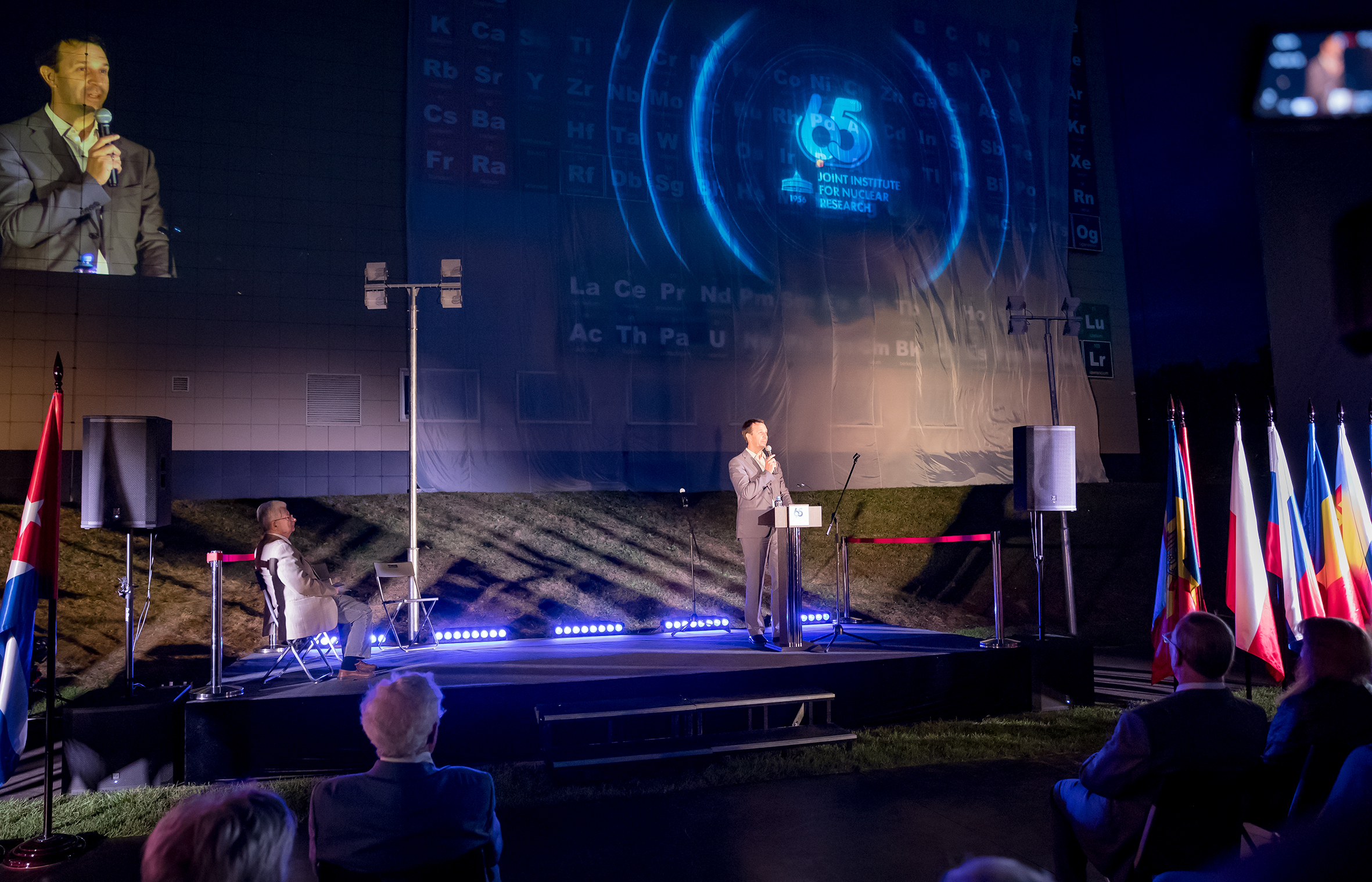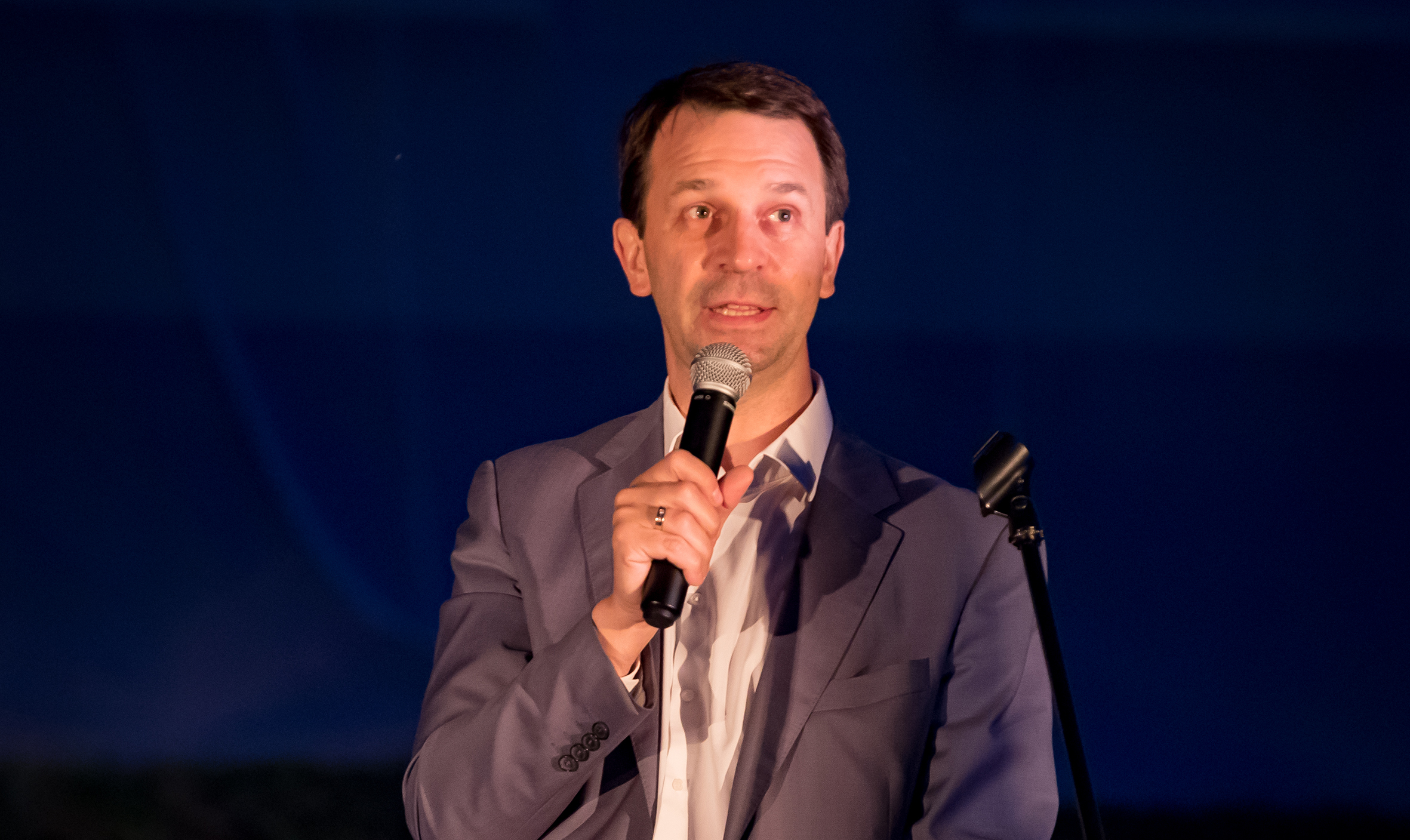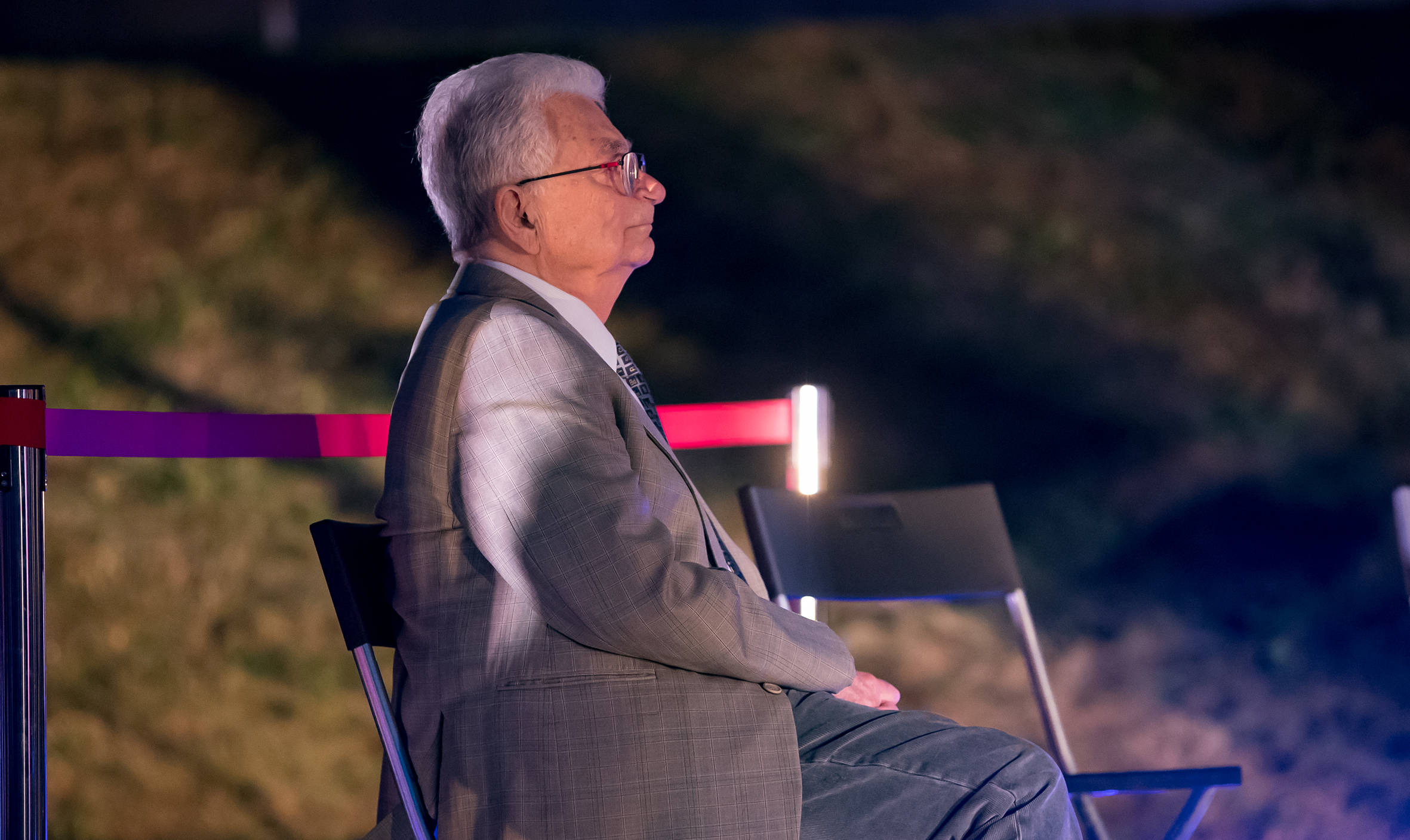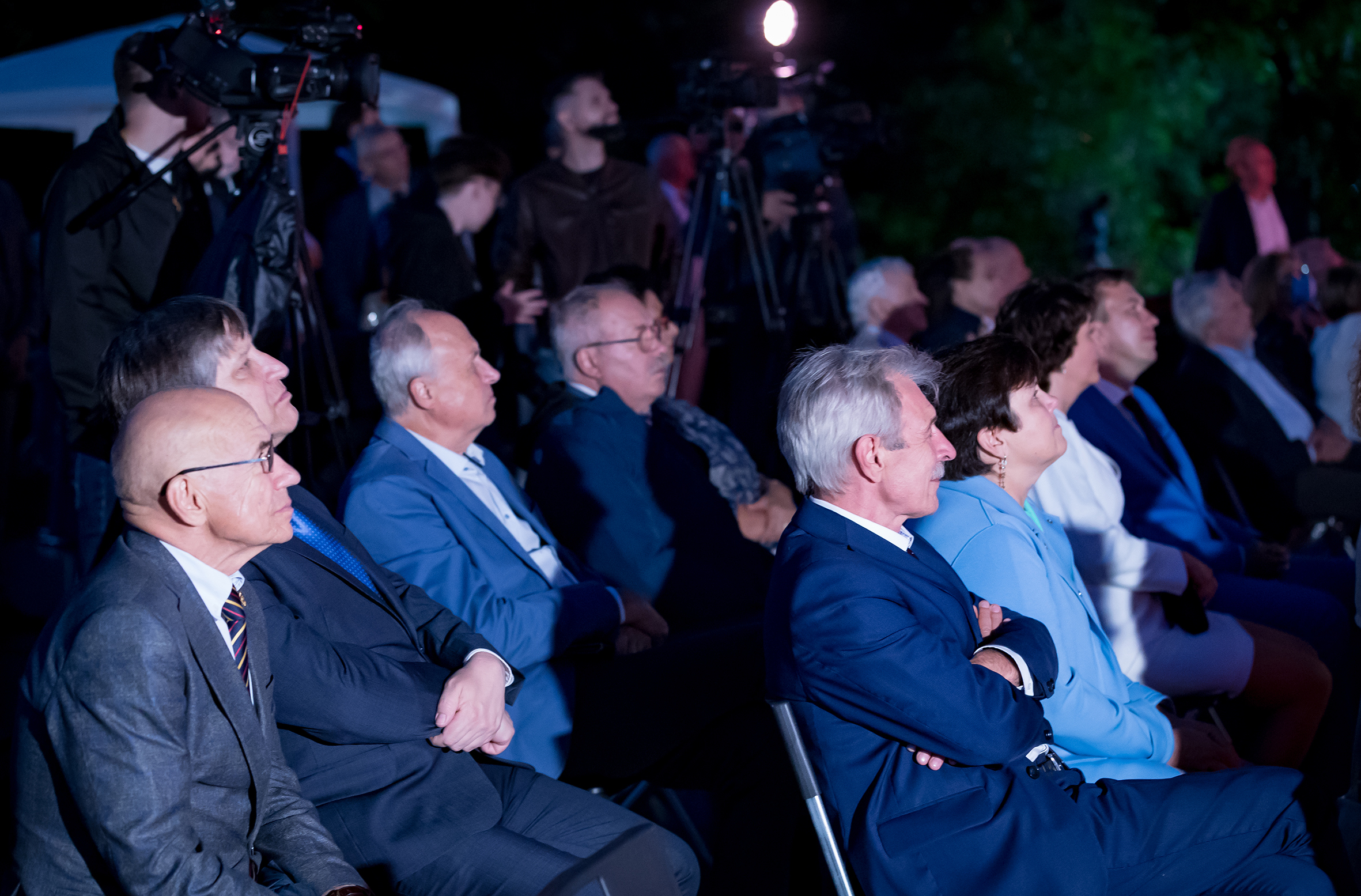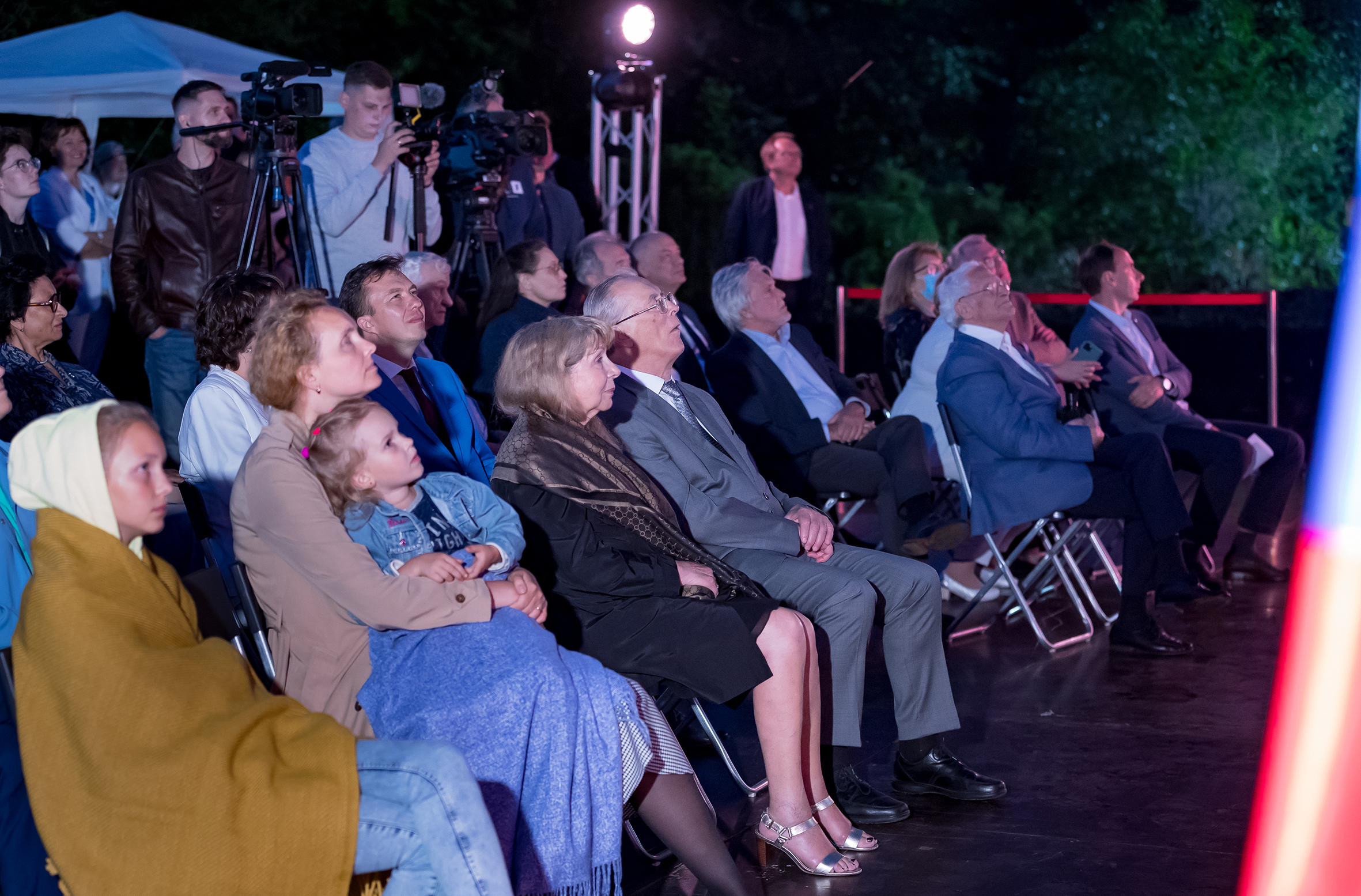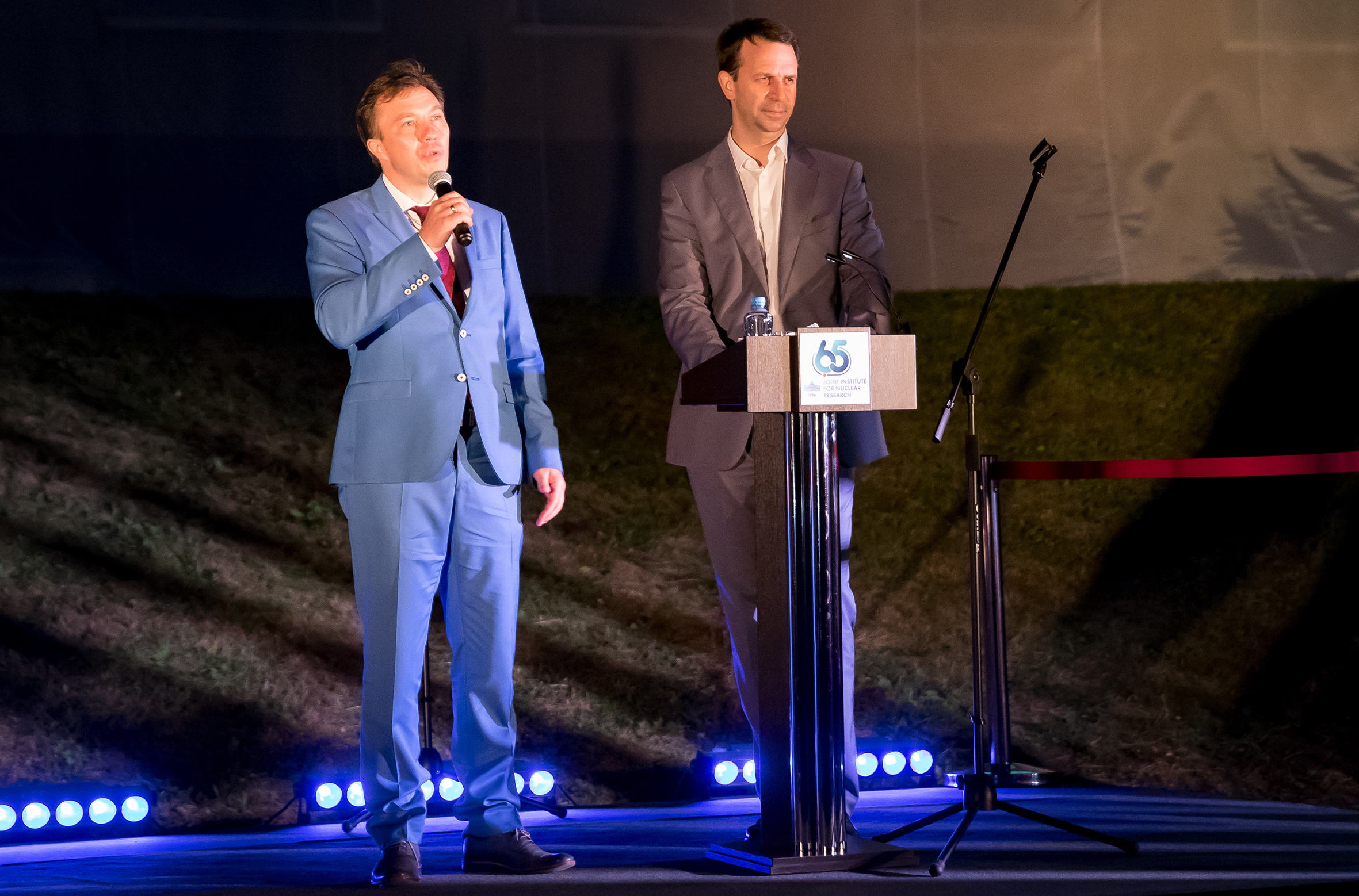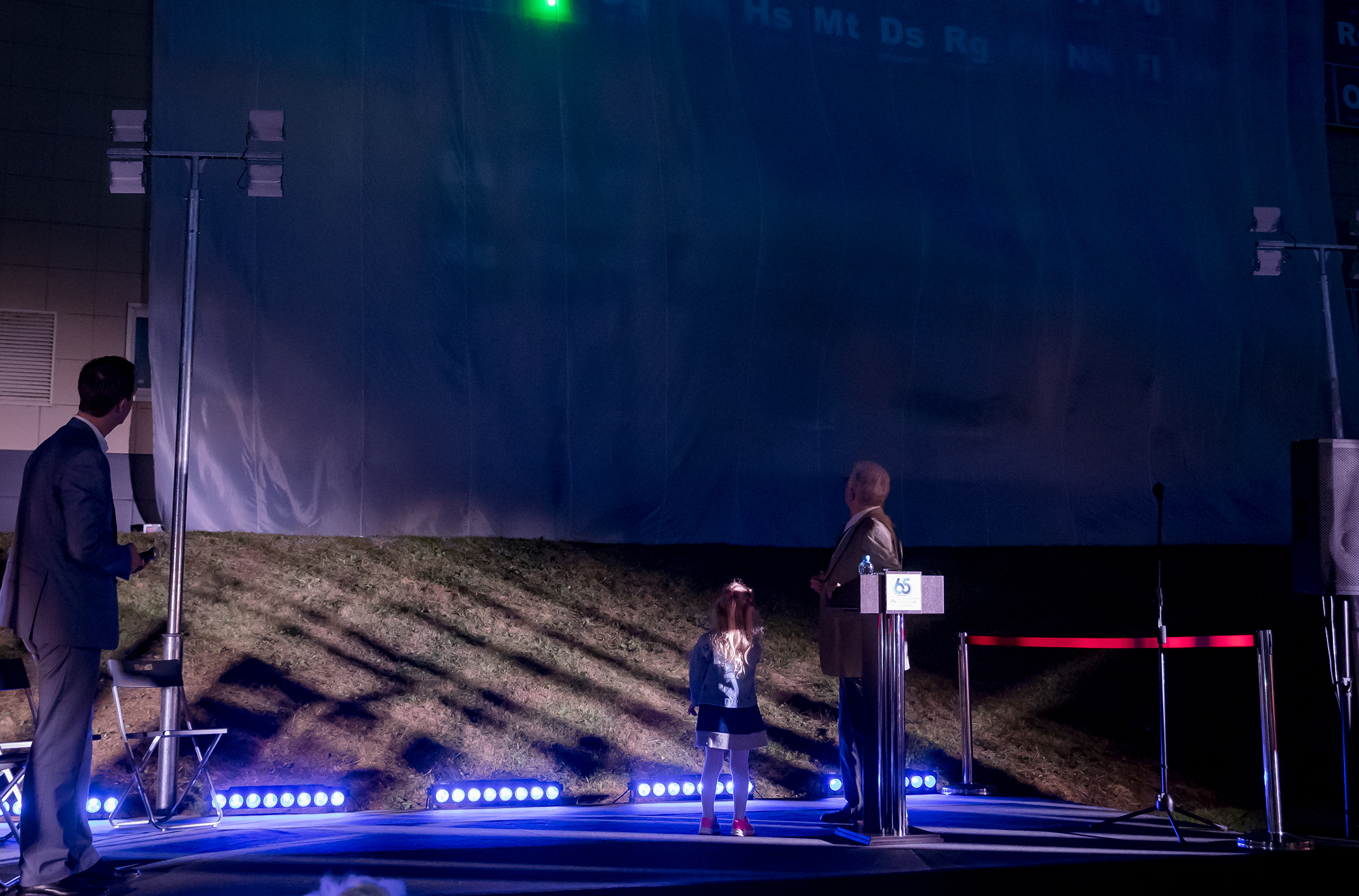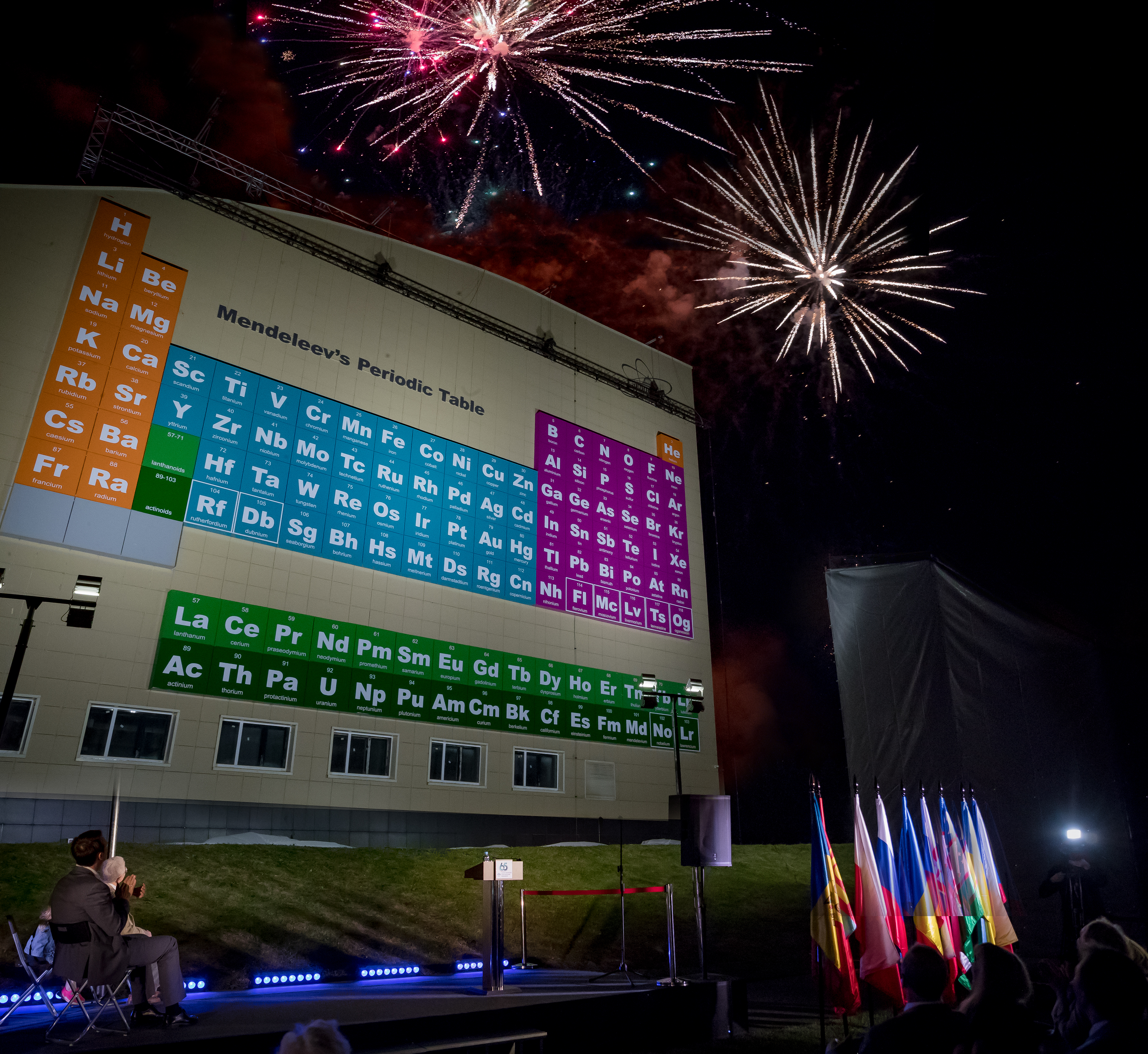JINR presented largest Periodic Table to Dubna
News, 24 July 2021
On 23 July, in the Year of Science and Technology in Russia, in the JINR’s jubilee year and on the eve of the Dubna anniversary, the largest in Eurasia Mendeleev’s Periodic Table was ceremonially opened on the wall of the Archimedes Swimming Pool in Dubna. It is 284 square metres large. The large installation occupies a big part of the wall of the JINR Swimming Pool Archimedes and faces the Volga river thus being clearly seen from both the embankment and ships passing along the river.
Presidents of the International Unions of Pure and Applied Chemistry and Physics Christopher Brett (IUPAC) and Michel Spiro (IUPAP), Plenipotentiary Representative of the Government of Russia in JINR, Minister of Science and Higher Education of Russia Valery Falkov, and Governor of the Moscow region Andrey Vorobyov sent video congratulations to citizens of Dubna and scientists of the Institute on opening a new attraction. Head of the Dubna city, Doctor of Physics and Mathematics Sergey Kulikov welcomed a new art object in person.
“We are proud of our scientists,” Valery Falkov said. “I would like to separately speak about our contemporaries: Yuri Tsolakovich Oganessian is a person whose name is immortalised in the Periodic Table. Even today, he continues to actively work on the synthesis of new elements. Dear friends, Russia faces ambitious tasks on the development of science, technologies, and human potential! We put our hopes on young people who are increasingly striving to enter the field of research and development. I am sure that the table will be complemented with new names born in our country.
The JINR’s gift to the city was not chosen by chance: during the existence of the Joint Institute for Nuclear Research, 10 out of 16 elements of the periodic table were synthesised here. These elements are marked with a white frame on the panel. Five of them were discovered thanks to Scientific Leader of the Laboratory of Nuclear Reactions Academician Yuri Oganessian who has become one of the two scientists honoured to receive a monument in the name of a chemical element (118 oganesson).
JINR Director Academician Grigory Trubnikov conducted the ceremonial opening of the new art-science object. “We know that our Dubna is a city involved in the modern form of the Mendeleev’s table,” he said. “It was here, at JINR, in Dubna, where 10 new elements have been discovered, which have found their place in the periodic table. The main thing that motivates a scientist is the desire to be the first. To be the first where no one has ever been before. Ideas of Dmitry I. Mendeleev were ahead of the time and opened the road to the future.
Our outstanding contemporary, scientist Yuri Tsolakovich Oganessian is moving along this road of knowledge beyond the boundaries of the periodic table. Together with an international team, he discovers and studies a so-called Island of Stability on the map of chemical elements. There are names of scientists, countries, and cities in the cells of the periodic table. The table unites the world. Mendeleev’s table is a symbol of the internationality of science. This is the only way it can be. Here, in Dubna, we live with a motto “Science brings nations together”.
Grigory Trubnikov said that it is possible to write a letter to Yuri Oganessian using the names of chemical elements as the address: to Yu. Ts. Oganessian, Russia, Moscow region, Dubna, Flerov street (Og, Ru, Mc, Db, Fl), and highlighted, “We are all lucky to live with you at the same time and in the same city.”
The discoverer himself was still focused on the future in his talk. Yuri Oganessian considers the periodic table a piece of art, “The table does not age. 150 years after its discovery, it attracts researchers – just like Giaconda by Leonardo attracts by her mysterious smile – to the wonderful world of science maintaining its mysteries and discoveries… Discovery of new elements sets significant challenges,” the famous scientist added. “However, more than a half of 16 elements discovered during the JINR’s existence were born in Dubna. And almost all elements of the last, 7th, row were discovered using methods and reactions of synthesis developed in Dubna, and this year, experiments have already begun at the accelerator complex Superheavy Element Factory. We intend to go further, to the 8th row of the table, using the Factory having no analogues in the world. Who would imagine this 20 years ago! You will see three grey empty cells on the panel after the veil will drop. These are the elements with atomic numbers 119, 120, and maybe 121. What awaits us? Predictions of theoreticians all over the world are diverse and sometimes even extravagant. But I think that the table will present us with surprises that are difficult to predict.”
The opening of the panel was concluded with a laser show on the wall of the swimming pool: the face of Dmitry Mendeleev was replaced with the dates of the discovery of the periodic table and then with the dates of discoveries of new chemical elements and their symbols. The finishing firework was accompanied by the song “Fly away with the wings of the wind…” from the opera “Prince Igor” the music for which was written by Alexander Borodin, a composer, chemist, physician, and friend of Dmitry Mendeleev.
The number of participants at the event on the embankment was limited due to the restrictions caused by the pandemic, but the online broadcast of the event was available in the group of the All-Russian competition “Big break” on VKontakte and on the Scientific Russia website.
Photos by Elena Puzynina
